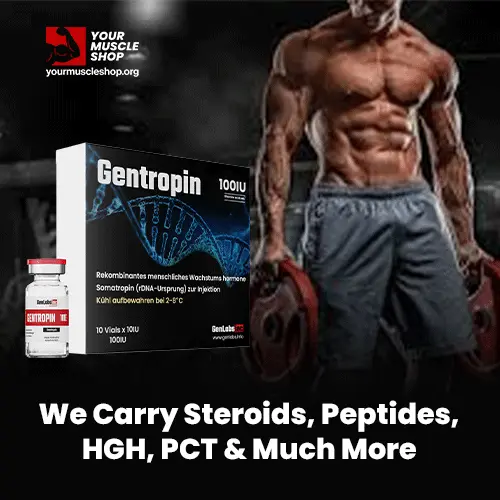Approved 💉 Steroidify - Official Worldwide Pharma Distributor since 2008 🧪
- Thread starter Steroidify Rep
- Start date
Approved Suppliers and Steroid sponsors
Similar threads
Similar threads
-
Approved Merry Christmas From Steroidify 🎅Show Your Gains And Get Paid
- Started by Steroidify Rep
- Replies: 9
-
Approved 30% Cashback Until The End Of The Year ❄️ Build Your Winter Stock With Steroidify
- Started by Steroidify Rep
- Replies: 6
-
-
-
Approved Halloween Spooky Gains 🎃 Big Discounts From Steroidify
- Started by Steroidify Rep
- Replies: 6
-
-
-
Approved Steroidify Wellness Month ❤️ BOGO + 30% Cashback
- Started by Steroidify Rep
- Replies: 8
-
-
Approved Independence Deals From Steroidify 🇺🇸 Super Discounts
- Started by Steroidify Rep
- Replies: 8
-
-
-
Approved Easter Madness 🐰 30% Cashback From Steroidify
- Started by Steroidify Rep
- Replies: 16
-
Approved Steroidify's Power Saver International 💥 Pharmacom Buy 3 Get 1 Free
- Started by Steroidify Rep
- Replies: 8
-
Approved Exclusive AMA Session With Jim 🏋️♂️ Powered By Steroidify
- Started by Steroidify Rep
- Replies: 11
-
Approved ⚠️ Notice: Our website is moving to STEROIDIFY.LTD ⚠️
- Started by Steroidify Rep
- Replies: 10
-
Approved Steroidify's Jingle Gains 🎅 Up To 60% Off
- Started by Steroidify Rep
- Replies: 10
-
Approved 🥧 Steroidify's Black Friday - Up To 50% Off 🦃
- Started by Steroidify Rep
- Replies: 10
-
Approved Steroidify's Halloween Deals 🎃 Up To 40% Off
- Started by Steroidify Rep
- Replies: 11
-
Approved Steroidify Columbus Day Specials ⛵ Up To 50% Off
- Started by Steroidify Rep
- Replies: 10
-
-
-
Approved Steroidify's Wellness Month 💪 30% Cashback Storewide
- Started by Steroidify Rep
- Replies: 11
-
Summer Cutting Deals With Steroidify 🌞 Up To 40% Off
- Started by Steroidify Rep
- Replies: 11
-
-
-
Approved 🥚 Egg-citing Easter Promo From Steroidify 🐰 30% Cashback All Month
- Started by Steroidify Rep
- Replies: 18
-
Approved Discover Steroidify's Selection Of E-Books
- Started by Steroidify Rep
- Replies: 0
-
Approved Celebrate St. Patrick's Day With Steroidify 🍀 35% OFF
- Started by Steroidify Rep
- Replies: 15
-
Approved Valentine's Month ❤️ Double The Love With Steroidify
- Started by Steroidify Rep
- Replies: 16
-
Approved ❄️ Steroidify End Of The Year Deals Still On ❄️
- Started by Steroidify Rep
- Replies: 15
-
Approved More Jingle Deals From Steroidify 🎄 Santa's Early This Year
- Started by Steroidify Rep
- Replies: 15
-
Approved 🐱 More BOGO Black Friday Deals From Steroidify 🐱
- Started by Steroidify Rep
- Replies: 14
-
Approved 🎃 Steroidify's Halloween Monster Sale - 45% OFF 💀
- Started by Steroidify Rep
- Replies: 15
-
-
-
Approved 🎙️ Live Now! 💬 Steroidify.Blog AMA Sessions #2
- Started by Steroidify Rep
- Replies: 15
-
-
-
-
-
Approved 🧐 Launching Steroidify.Blog AMA Sessions 🙋
- Started by Steroidify Rep
- Replies: 14
-
Approved 💲💲 Steroidify $1000 Store Credit Giveaway 💲💲
- Started by Steroidify Rep
- Replies: 15
-
Approved 🧪 Steroidify Has The Largest Lab Test Section 🧪
- Started by Steroidify Rep
- Replies: 15
-
Approved 🌼Early Spring Sale - Up To 50% Off From Steroidify 🌻
- Started by Steroidify Rep
- Replies: 14
-
-
Steroidify $4000 Giveaway Results - Are You A Winner?
- Started by Steroidify Rep
- Replies: 13
-
-
-


































